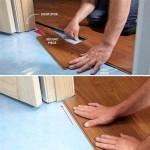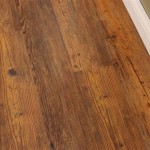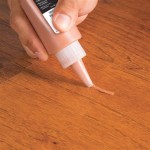Vinyl flooring is a popular and affordable way to spruce up the look of any room. It can be used in kitchens, bathrooms, and other areas of the home. Vinyl flooring is easy to install, durable, and comes in a variety of styles and colors. In this article, we will discuss how to do vinyl flooring, from selecting the right materials to installation and maintenance.
Selecting the Right Vinyl Flooring
When selecting the right vinyl flooring for your project, it is important to consider the type of room it will be used in. Vinyl flooring is available in a variety of styles, from traditional wood-look planks to modern hexagon tiles. The type of vinyl flooring you choose should be based on the look and feel you want to achieve. You will also want to consider the traffic and wear and tear that the flooring will be exposed to. For high traffic areas, it is best to choose a vinyl flooring with a higher wear layer.
Preparing the Floor
Before installing vinyl flooring, it is important to make sure the surface is properly prepared. This includes removing any existing flooring, cleaning the surface, and making sure it is level. If the surface is uneven, you can use a self-leveling compound to fill any dips or depressions. It is also important to check for moisture and make sure the subfloor is dry before beginning the installation.
Installing the Vinyl Flooring
Vinyl flooring is usually installed using one of two methods: adhesive or floating. If you are using the adhesive method, you will need to spread an adhesive onto the subfloor before laying the vinyl flooring. For a floating installation, you will need to use a vinyl underlayment to create a cushion between the subfloor and the vinyl flooring. Once the adhesive or underlayment is in place, you can begin laying the vinyl planks or tiles.
Caring for Your Vinyl Flooring
Caring for your vinyl flooring is important to keep it looking its best. Regular cleaning with a damp mop or cloth is recommended. You should also avoid using any harsh chemicals or abrasive cleaners on the surface. For best results, use a specially formulated vinyl floor cleaner. You should also avoid dragging or sliding furniture across the surface as this can cause scratches or damage.
Repairing Vinyl Flooring
If your vinyl flooring is damaged, it can usually be repaired. For small scratches or chips, you can try using a touch-up kit designed for vinyl flooring. For larger damages, it may be necessary to replace the damaged vinyl planks or tiles. If this is the case, you will need to purchase new pieces and replace the damaged ones.
Conclusion
Vinyl flooring is a great option for updating the look of any room. It is easy to install and comes in a variety of styles and colors. When selecting vinyl flooring and preparing the surface, it is important to consider the type of room it will be used in and the amount of traffic and wear and tear it will be exposed to. Proper care and maintenance will help keep your vinyl flooring looking its best. If damage occurs, it can usually be repaired with a touch-up kit or by replacing damaged pieces.





:no_upscale()/cdn.vox-cdn.com/uploads/chorus_asset/file/19494137/howto_vinylfloor_08.jpg)

:max_bytes(150000):strip_icc()/easy-install-plank-vinyl-flooring-1822808-02-19a3b80cd59943938a401560203706f3.jpg)


:max_bytes(150000):strip_icc()/vinyl-basement-flooring-1314732-01-2f36307f8c6a4156bb701076249642de.jpg)
:max_bytes(150000):strip_icc()/easy-install-plank-vinyl-flooring-1822808-10-6cfb7acfac434155a53e0ef80bfbc825.jpg)


/cdn.vox-cdn.com/uploads/chorus_asset/file/19650591/flooring_install.jpg)
Related Posts








